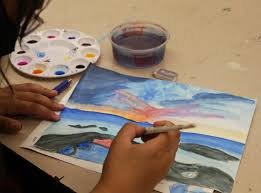Starting a creative journey in painting and drawing can be deeply fulfilling. These artistic pursuits are perfect outlets for self-expression, and whether you’re looking to improve your skills or simply explore a new hobby, the right guidance can make a world of difference. Additionally, for those looking to introduce someone else to art, creative materials make wonderful Gifts for Her especially if she has an interest in painting or drawing. This article will provide a step-by-step guide for beginners and highlight essential tools, techniques, and tips to start with confidence.
1. Gather Essential Art Supplies
Before beginning, it’s essential to invest in a few basic supplies. For painting, beginners should have a selection of brushes, canvas or paper, and either watercolor, acrylic, or oil paints. For drawing, pencils with different lead softness, sketch paper, and an eraser are all you need to get started. Choosing quality materials is crucial, as it will help you understand how different media work and feel. Additionally, if you’re picking out Gifts for Her, consider items like sketchbooks, quality pencils, or a beginner’s painting kit that can encourage her creativity. With the right tools, you can fully immerse yourself in the art-making process.
2. Understand Basic Drawing Techniques
Learning a few fundamental drawing techniques is the next step. Start with simple exercises such as drawing shapes, lines, and shading to practice hand control and coordination. Try creating gradients from light to dark to build a better understanding of pressure and pencil technique. Other exercises like contour drawing, where you trace the outline of an object, help build your ability to see and replicate shapes accurately. Patience is essential—don’t worry about perfecting your skills immediately. Practicing these basic techniques will strengthen your foundation, which you can build upon as you advance.
3. Choose Your Painting Medium
Painting offers a variety of mediums, each with unique characteristics. For beginners, watercolors or acrylics are typically easier to start with. Watercolors are ideal for delicate, translucent effects and are relatively easy to clean up, making them perfect for beginners. Acrylics dry quickly and are more forgiving, as you can layer and correct mistakes easily. Oils, while beautiful, require more time to dry and demand certain techniques, so they might be more challenging initially. Experimenting with these different mediums will help you decide which one aligns best with your style and preferences.
4. Practice Simple Subject Matter
When you’re new to art, selecting simple subjects can help you focus on technique. Try drawing or painting everyday objects, such as fruit, flowers, or basic landscapes, before moving on to more complex compositions. Simple subjects allow you to work on form, shadow, and color without overwhelming detail. Once you feel comfortable, gradually increase the complexity of your subjects. This approach enables you to learn and improve without getting discouraged, which is key to building confidence in your abilities.
5. Explore Colors and Blending Techniques
Understanding color theory and blending techniques can significantly improve your art. Start by experimenting with primary colors and mixing them to create secondary colors. As you practice, you’ll learn how to blend colors smoothly to create depth and dimension. For instance, shading from light to dark can give a three-dimensional effect to your work. Playing with different colors and blending will allow you to express emotions and moods in your artwork. As you progress, try using complementary colors or exploring warm and cool color palettes to enhance the visual appeal of your work.
6. Join an Art Community or Take Classes
Connecting with others who share your passion for art can be incredibly inspiring and beneficial. Consider joining a local art class, online workshop, or community to learn new skills and receive constructive feedback on your work. Art classes are valuable for building techniques and discovering new styles, as they often introduce you to ideas you may not have explored alone. Online art communities can be a wonderful source of inspiration, where you can see the work of other beginners and seasoned artists alike. Engaging with others can help you stay motivated and keep growing as an artist.
7. Make Time for Regular Practice
Consistency is key when developing any new skill, and art is no exception. Set aside time each week—or even daily, if possible—to draw or paint. Practicing regularly will help you refine your techniques and build confidence in your abilities. It’s also an opportunity to unwind and enjoy the process, which can be therapeutic in itself. Over time, you’ll see noticeable progress, which is one of the most rewarding aspects of learning to create art.
Final Thoughts
Getting started with painting and drawing is a journey that brings joy, relaxation, and a sense of accomplishment. With a few supplies, practice, and a willingness to learn, you can develop your artistic skills and create beautiful works of art. Whether you’re pursuing this as a personal hobby or exploring it as a unique way to give Gifts for Her that inspire creativity, art has a way of enriching life in meaningful ways. Embrace each step of the process, and remember that every artist was once a beginner—your potential is limitless.


